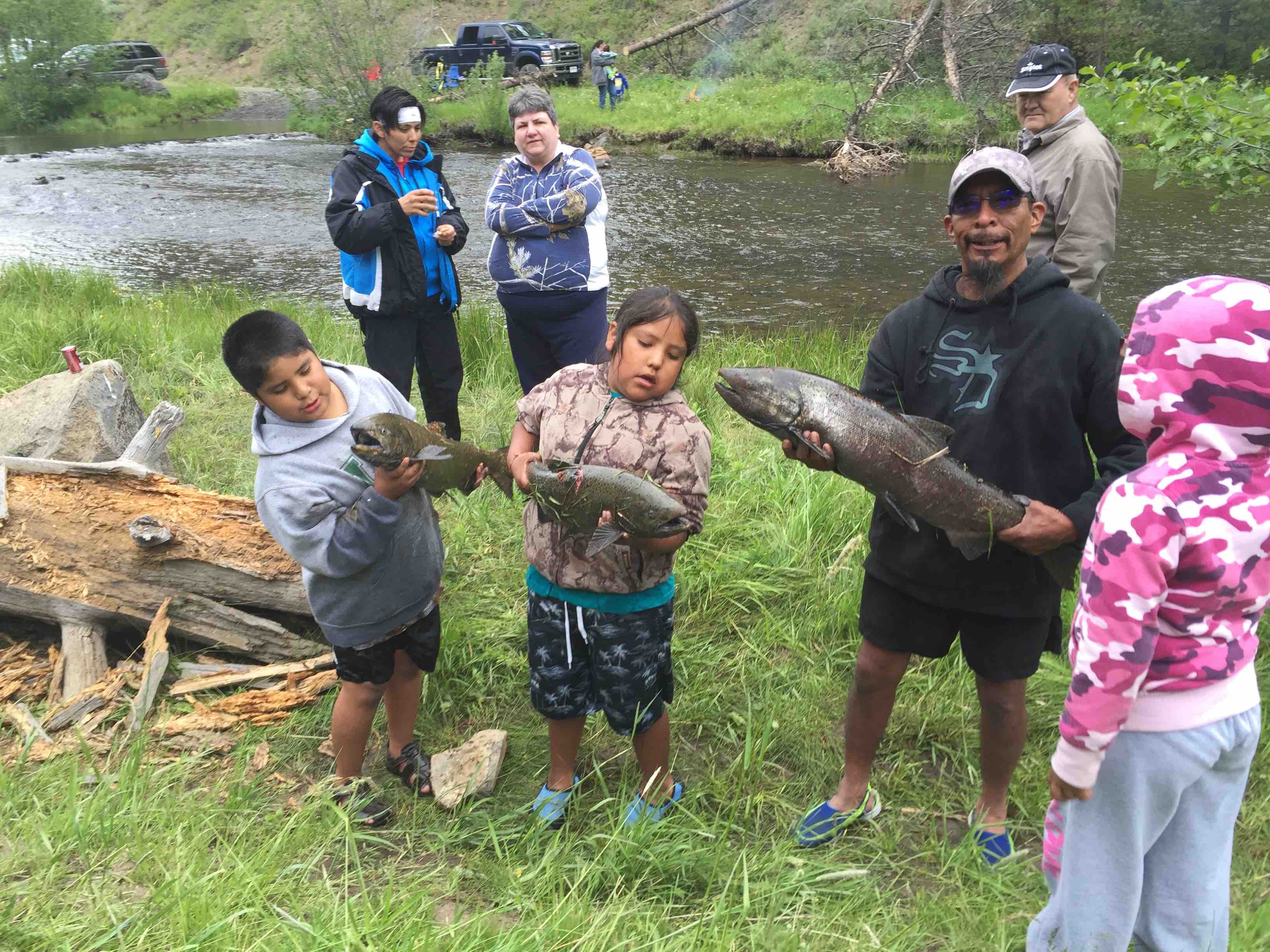Have a story idea
Have a story idea? Send it to us here.

Source : Flickr - USFWS Pacific Region
November 18, 2023
Author : Patty Allen
Almost 80 years ago, in 1940, hundreds of tribal members from the Colville Reservation in Eastern Washington, the Tulalip Reservation in Western Washington, the Blackfoot Reservation in Montana, and the Nez Perce, Yakimas, Flatheads, and Coeur d'Alenes gathered at Kettle Falls. They had gathered to mourn the loss of their ancestral fishing grounds and the loss of an era when salmons were plentiful.
The "Ceremony of Tears," as it was known, was because of the construction of the Grand Coulee Dam on the Columbia River to generate hydropower.
The reservoir Lake Roosevelt, located next to the dam, drowned their fishing spot and cut off the salmon supply.
Pacific salmon and steelhead have a complex life cycle that begins in the Washington, Oregon, California, and Idaho rivers where they spawn. The Fry (baby Salmon) travel long distances up and down the West Coast of North America from freshwater to the Pacific Ocean.
However, the construction of the Grand Coulee Dam and Chief Joseph Dam in central Washington prevented salmon from migrating to the ocean and returning as adults to spawn in their natal streams in the upper Columbia Basin, which once produced 10 to 16 million fish.
Presently, approximately two-thirds (68 percent) of US salmon consumed is imported, but all this can change.
The Biden-Harris administration announced a landmark agreement recently to fund tribally led efforts to restore healthy, abundant salmon populations in the Upper Columbia River Basin.
The agreement reached by the United States, the Confederated Tribes of the Colville Reservation, the Coeur d'Alene Tribe, and the Spokane Tribe of Indians will fund studies to assess the feasibility of, and eventually reintroduce, salmon in Upper Basin restricted habitats.
The Bonneville Power organization, a federal power marketing organization under the Department of Energy, has agreed to provide $200 million over 20 years to develop the Tribally driven implementation plan. The Department of the Interior has stated that it will provide $8 million over two years to these efforts through the Bureau of Reclamation.
According to data from the National Oceanic and Atmospheric Administration (NOAA), upper Columbia River spring-run Chinook salmon are now among the most endangered species on the West Coast. The upper Columbia River steelhead, like the upper Columbia River steelhead, are protected under the Endangered Species Act.
US Secretary of the Interior Deb Haaland stated at a ceremonial signing that the federal government respects the traditional value of salmon, steelhead, and other native fish among tribes along the Columbia River.
The Upper Columbia United Tribes have developed a four-phased strategy to explore salmon restoration in dam-barred areas for over a decade.
They completed phase one of their plan in 2019, testing the feasibility of fish passage over Columbia River dams and whether salmon stocks had enough habitat.
The tribes are in the second phase of their 20-year plan, which entails researching and building fish passage prototypes to test how to get fish over dams like Grand Coulee Dam.
Phase three builds permanent fish passage infrastructure and improves salmon habitat, while phase four monitors program success and habitat improvements.
Phase two targets, funded by $200 million, include:
The tribes don't want to take down dams but rather create a pathway for the fishes.
Tyrel Stevenson, the spokesperson for the Coeur d'Alene Tribe, said, "These fish remember what they're supposed to do."
Apart from this, President Biden's Investing in America plan is also giving NOAA Fisheries $60 million to address tribal objectives and climate change's effects on Pacific salmon. The Mitchell Act transfers funds from the Inflation Reduction Act, the greatest climate investment in history, to tribally prioritized Columbia River Basin hatchery modifications that produce Pacific salmon.
These funds are part of NOAA's historic $3.3 billion under the Inflation Reduction Act to restore healthy and abundant salmon, steelhead, and other native fish populations to the Columbia River Basin.
"By publicly acknowledging that healthy and abundant salmon runs are essential, we know the Biden administration is prioritizing the needs of the Northwest and working to uphold our treaty," the Nez Perce Tribe said. "We are relying on these federal agencies to take the necessary, urgent actions to restore salmon populations in the Columbia Basin."
Category : Tribally Designated Entity
